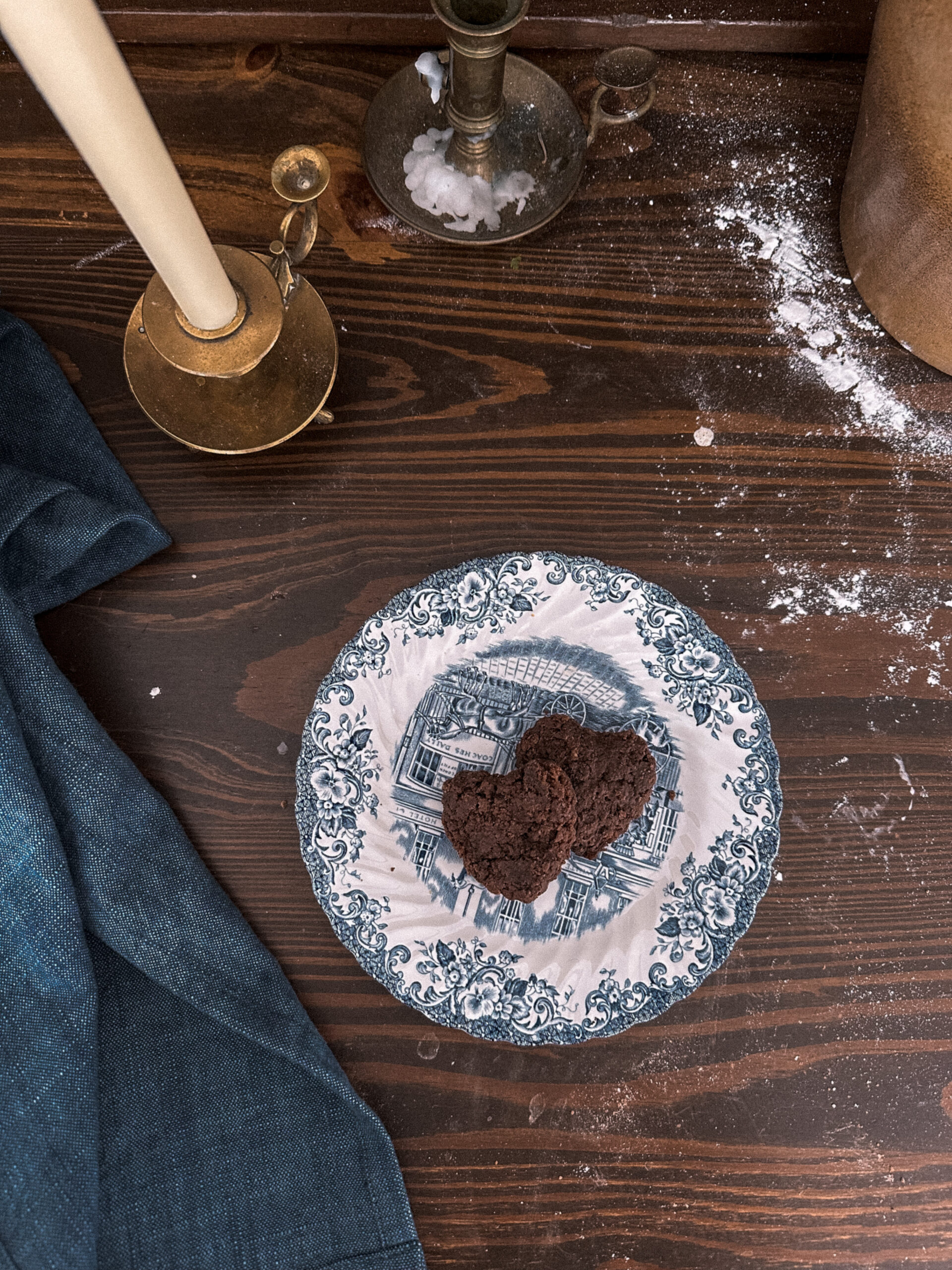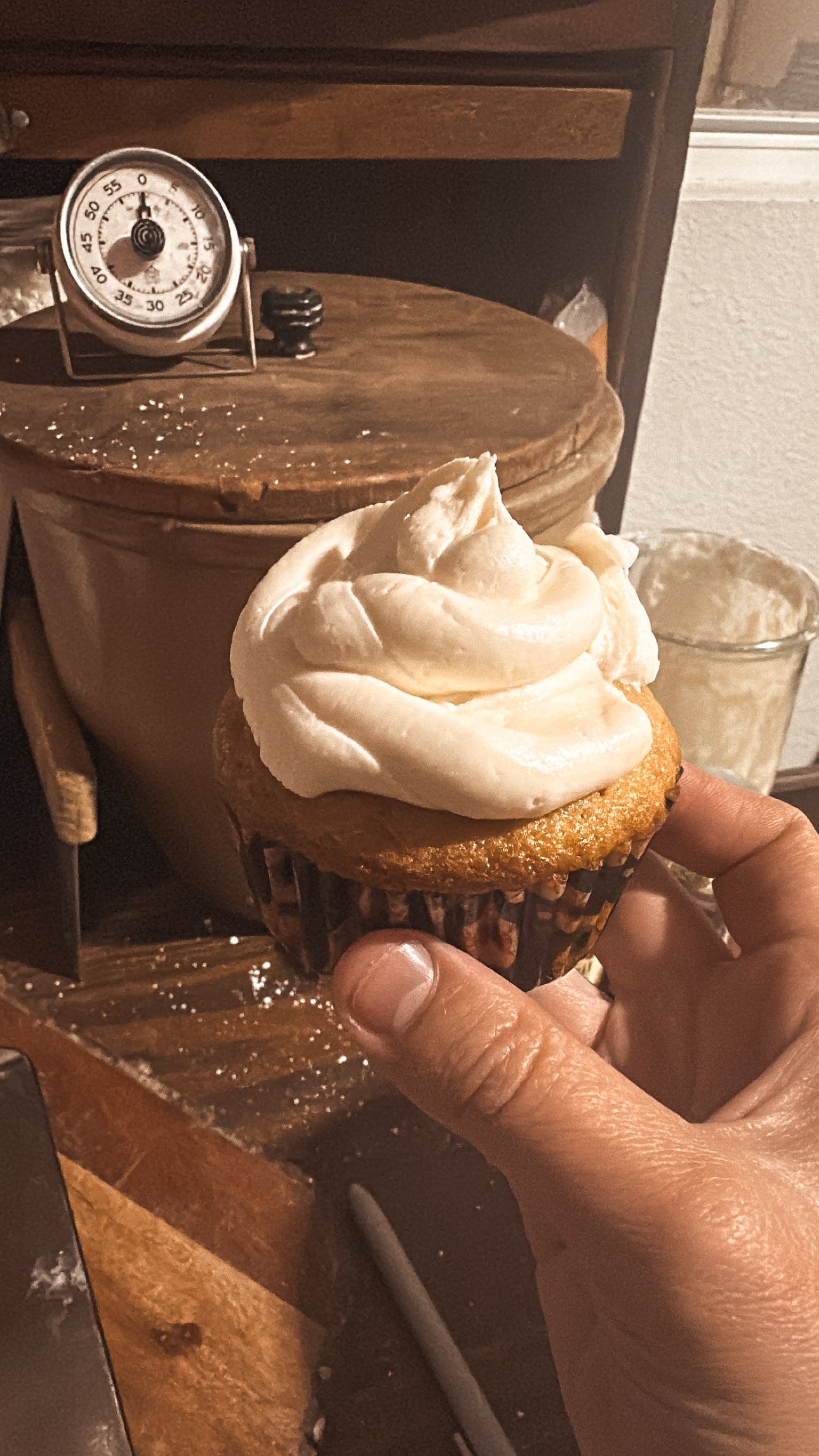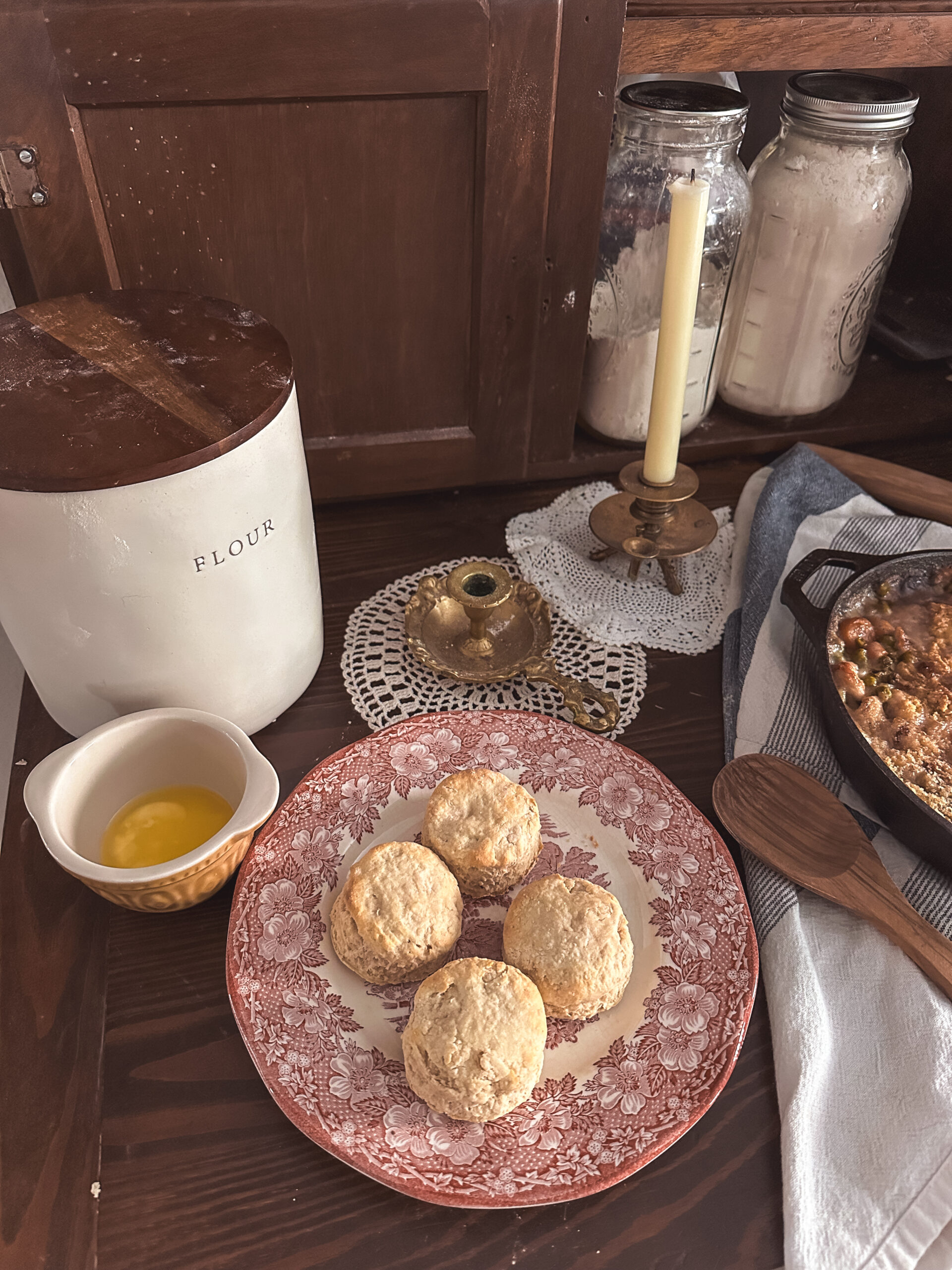
Long Fermented Sourdough Bread: A Guide to Achieving Perfectly Tangy Loaves
Join the course
Humblebrag raclette put a bird on it blog, fam hexagon jianbing neutra godard plaid scenester.
Homesteading 101 Starter Course
Family
Free Guide
Courses & Guides
shop with me
FAVE LINKS
Low Toxic Living
Homesteading
Homemaking
Recipes
Topics
I’m a homesteader, homemaker, milkmaid, and bread baker! This is my very own slice of the internet, dedicated to inspiring you to live old fashioned in today's modern world. I’m so excited you’re here, and can’t wait to connect with you.
Are you looking for a new recipe to try out in the kitchen? If so, you might want to give this long-fermented sourdough bread a go. Not only does it offer a complex depth of flavor, but it also boasts the nutritional health benefits of fermented foods.
One thing to keep in mind is that this recipe takes a bit longer than other artisan style breads, but most of the time is hands off. The key to success is adjusting your starter amount and temperatures to facilitate longer fermentation times. With a little patience, you’ll be rewarded with a long fermented sourdough bread loaf that’s rich in flavor with a crackly crust and open crumb.
Hey there! Some links on this page are affiliate links which means that, if you choose to make a purchase, I may earn a small commission at no extra cost to you. I greatly appreciate your support!

Table of Contents
What is the Importance of a Long Fermentation in Sourdough Bread?
If you’re a fan of sourdough bread, you might have noticed that the longer the dough ferments, the more digestible and flavorful the bread becomes. But why is that?
When making sourdough bread, the wild yeast in your sourdough starter consumes the sugars in the flour and produces CO2 that is trapped inside the gluten network, causing the bread to rise. However, the bacteria in your starter also play a crucial role in breaking down the gluten in your dough, making the resulting loaf much easier to digest. If you were to use commercial yeast, it would be a whole other story!
A longer fermentation time allows the bacteria to break down more gluten, resulting in a more digestible bread. Additionally, a long-fermented sourdough bread has a lower glycemic index, meaning it produces a lower surge in blood sugar and provides prolonged energy release.
Not only is long fermented sourdough bread easier on your digestive system, but it also makes the nutrients in the bread more available to your body. This makes it a healthier option than regular bread, which can cause big spikes in blood sugar.
In summary, a long fermentation time is important in sourdough bread because it improves the bread’s digestibility, flavor, and nutritional value.
How to Make Long Fermented Sourdough Bread (Step by Step Guide)
To make a delicious long fermented sourdough bread, you can use either white bread flour or whole wheat flour. Although using straight bread flour will yield the best results, blending up to 50% whole wheat flour can give your bread a good complexity of flavor. However, it is not recommended to use all-purpose flour for this recipe.
The dough for this recipe has a hydration level of around 70%, making it fairly easy to handle. Here is a step by step guide to making long fermented artisan sourdough bread:
- Mix the flour, water, and sourdough starter in a bowl until the ingredients are well combined.
- Cover the bowl with a damp cloth and let it rest for 30 minutes.
- Add the salt and mix well.
- Knead the dough for 10-15 minutes until it becomes smooth and elastic.
- Place the dough in a lightly oiled bowl, cover it with a damp cloth, and let it rest for 4-6 hours at room temperature.
- Fold the dough 2-3 times during the resting period to improve the gluten structure.
- After the resting period, shape the dough into a round loaf and place it in a floured proofing basket.
- Cover the basket with a damp cloth and let it rest for another 4-6 hours at room temperature.
- Preheat your oven to 450°F (230°C) and place a Dutch oven with a lid in the oven to preheat.
- Once the dough has finished proofing, carefully transfer it to the preheated Dutch oven.
- Put the lid on the Dutch oven and bake the bread for 30 minutes.
- Remove the lid and bake the bread for another 15-20 minutes until it becomes golden brown.
- Let the bread cool completely on a wire rack before slicing and serving.
With this step by step guide, you can make a delicious long fermented sourdough bread that will impress your family and friends.
Related Posts:
- Get Baking Today: Beginner Sourdough Starter Recipe
- Ingredients for Better Sourdough: Tips and Tricks for a Perfect Loaf
- Sourdough Bread: A Beginner’s Guide to Delicious Homemade Loaves
- Bulk Ferment vs Cold Ferment: Which is Better for Your Bread Dough?
- Can Sourdough Starter Go Bad? Tips for Keeping Your Starter Fresh
- Long Fermented Sourdough Bread: A Guide to Achieving Perfectly Tangy Loaves
- Should you Clean your Sourdough Starter Jar?
- Purchase all of my Sourdough Supplies Here!
DAY 1
Step 1 – Feed Your Starter
To start making your sourdough bread, take 50g of your sourdough starter, and feed it with 50g of flour and 50g of water in a mason jar or jar of some kind. This will be used in your dough once it reaches its peak. Remember to use a rubber band to keep track of when your starter is at its peak. An active sourdough starter will give you the best fermentation. We aren’t using sourdough discard for this recipe.
Step 2 – Autolyse
Weigh out your sourdough starter and water into a large bowl. Mix them together briefly, then add your flour and salt, and mix everything together to form a shaggy dough. Cover the bowl with plastic wrap or a damp towel and let it sit for around 1 hour. This process is called “autolyse” and allows your flour to soak in all the water and become hydrated. A dough scraper, wooden spoon, can help you mix it and keep the sides of the bowl clean.
Step 3 – Forming Up The Dough
After the dough has been through the autolyse process, you need to bring it together into a ball. Work your way around the bowl with wet hands, grabbing the dough from the outside, stretching it up and over itself, into the center, until a smooth ball is formed. You will pull all sides of the dough.
You shouldn’t need more than about 20-30 stretches to form the ball. Once the dough has formed into a smooth ball, cover it with plastic wrap or a clean towel and let it rest for 30 minutes. You’ll notice that the dough is fully hydrated after soaking all the water up. It will be fairly sticky but as you bring it into a ball, it will become smoother and shinier. This long-fermented recipe is coming along!
Step 4 – Stretch & Fold
Next, is a series of folds. Over the next few hours, you need to create some structure for your dough by “stretching and folding.” Aim to do around 4-6 sets of stretches and folds. For each set, stretch the dough up and over itself 4 times. Leave around 15 minutes in between each set. Again you do not have to be exact with time, but you need to do at least 4 sets over 2 hours.
Step 5 – Bulk Ferment (Dough Rise)
Once you’ve finished your stretch and folds, place a plastic cover over your dough and let the dough rest and ferment. You want to allow your dough to rise until it’s JUST UNDER DOUBLE. This dough has a low percentage of sourdough starter and is suitable for an overnight fermentation. This is the first rise.

DAY 2
Shaping Your Dough
After the first ferment, it’s time to shape your dough into either a boule or a batard. Sprinkle rice flour onto your counter top, but be sparing. You only need a light dusting. Use a bench scraper to gently ease the dough out of the bowl, letting it land upside down on the counter.
Pull the edges of the dough into the centre and flip it over so that the sticky side is now underneath. Gently pull the dough into a tight ball. You will need a banneton to put your dough into. If you don’t have one, a bowl or basket lined with a floured tea towel is perfectly fine.
Liberally flour your banneton or cloth with rice flour. Place the dough into the banneton with the smooth side down, so the seam is on the top. If you’re using a cloth or tea towel in a bowl, it’s okay to put your dough with the smooth side up. Lift your dough around the edges to pop a little more rice flour if you feel it needs it. Be gentle to preserve the gases and air bubbles that have formed during your bulk ferment.
Cold Ferment
Cover your shaped dough loosely with a plastic bag or damp tea towel and place it into the fridge. You will need to leave your dough in the fridge between 24 to 48 hours (or anywhere in between). It’s super important that your fridge is set to the correct temperature for this (3C or colder)! This period of cold fermentation is the KEY to long fermented sourdough bread! This is the final rise that the dough will get in the fridge.
Preparing to Bake
When you’re ready to bake your sourdough, preheat your oven to 230C/450F. Place your Cast Iron Dutch Oven into the oven when you turn it on so it gets HOT. Preheat for around 1 hour to ensure your oven is super hot. Leave your dough in the fridge until the very last minute – placing a cold dough into a hot oven will give you a great “spring”.
Bake Time!
When your oven is at temperature, take your sourdough out of the fridge. Gently place it onto a piece of parchment or baking paper. Make sure that you make the parchment paper big enough to use the edges as a handle to lower the dough into your Dutch Oven.
Gently score your bread on the top of the dough with a lame, clean razor blade or knife. At minimum, a large cross is sufficient, but you can get as artistic as you like. Carefully take your dutch oven out of the oven. Place the sourdough into the pot using the baking paper as a handle. Put the lid on and place into the hot oven.
Finishing The Bake
After 30 minutes with the lid on at 230C/450F, remove the lid and bake for an additional 10-15 minutes with the lid off at 210C/410F. When you remove your dough from the oven, carefully remove it from the Dutch Oven as soon as possible and place it on a wire rack to cool.
Why Temperature is Crucial for Long Fermented Sourdough Bread
When it comes to making sourdough bread, temperature plays a crucial role in determining the length of bulk fermentation and cold fermentation. The bulk fermentation process occurs at room temperature, and it is during this stage that the yeast in your sourdough starter will cause the dough to rise. The temperature of your kitchen and the amount of starter you use will determine how long this process takes.
Similarly, the success of the cold fermentation stage is determined by the temperature of your fridge. For best results, the shaped sourdough should be cold fermented at temperatures of 3C or lower. If your fridge is warmer than this, the dough will over-ferment too quickly, and you will not reap the benefits of an extended fermentation period.
Lower temperatures, combined with a lower percentage of sourdough starter, will allow you to ferment your sourdough for a longer period, maximizing its health benefits. However, achieving the perfect balance between gluten breakdown during the cold retard and desired oven spring can be challenging.
By understanding the importance of temperature in the fermentation process, you can create delicious, healthy sourdough bread that is perfect for any occasion. For more information on the differences between bulk fermentation and cold fermentation, check out our article here.

Baker’s Timeline for Longer Fermentation
Long fermentation is a great way to make sourdough bread. It takes minimal effort, and the dough spends most of its time in the fridge. The good bacteria in the dough do all the work for you! The following timeline is an example, and you can adjust it to fit your schedule.
DAY 1 (Wednesday)
- 2pm: Feed your sourdough starter.
- 7pm: Stretch and fold the dough.
- 9pm: Bulk fermentation overnight. Ensure the temperature is below 21°C.
DAY 2 (Thursday)
- 6am: Shape the bread dough and place it in the banneton. Then, put it in the fridge for cold fermentation.
DAY 3 (Friday)
- Leave the sourdough in the fridge for 48 hours. Place it at the back of the fridge, where it’s coldest.
DAY 4 (Saturday)
- 6am: Preheat the oven.
- 7am: Bake your sourdough bread!
This timeline starts on Wednesday and finishes on Saturday morning, giving you freshly baked sourdough for the weekend. Remember, this is just an example, and you can adjust the timeline to suit your needs. For more information on sourdough baking timelines, check out our resource here.
Can Sourdough Ferment Too Long?
Yes, sourdough can ferment for too long and ruin the dough. During bulk fermentation, if the dough is left to ferment for an extended period, it can become soupy and impossible to shape. To prevent this, adjust the amount of sourdough starter or the temperature of your kitchen to manipulate the fermentation process.
Additionally, sourdough can also ferment for too long during cold fermentation. Leaving the dough in the fridge for an extended period can cause the lactic acid bacteria to break down the gluten structure, resulting in a loaf that collapses when removed from the banneton.
To achieve long-fermented sourdough with the desired flavor and gluten structure, it is essential to balance the two factors. This balance can make a significant difference between good bread and great bread. To avoid over-fermentation, it’s crucial to keep an eye on the dough and adjust the fermentation time and temperature accordingly.
In summary, while long-fermented sourdough can be delicious, it’s important to monitor the fermentation process to avoid over-fermentation and ensure the dough has the desired texture and structure.
How Long Should You Ferment Sourdough Bread?
Determining the ideal fermentation time for sourdough bread can be challenging since it varies depending on several factors. The strength and age of your sourdough starter, the quantity used, and your environment’s temperature will all impact fermentation time.
Generally, bulk fermentation takes between 6 to 8 hours, but you can adjust the starter amount and temperature to shorten or lengthen the process.
It’s essential to avoid cold fermenting sourdough bread for more than 72 hours. Even fermenting for up to 48 hours can result in gluten structure loss unless you reduce the starter quantity.
Frequently Asked Questions
Here are some common questions people have about making sourdough bread:
- Should you add olive oil to your dough? Adding 20g of olive oil to your dough is an option, but not necessary. If your sourdough starter is mature and you properly judge fermentation, you should end up with a light and crispy crust on your loaf.
- How do sourdough yeast survive in acidic conditions? Sourdough yeast survives in acidic conditions because it forms a symbiotic relationship with the lactic acid bacteria. While the acids produced by the bacteria can break down the gluten network and result in a flat bread, wild yeast is resistant to these acids and can still live in the dough.
- Is long fermented sourdough bread gluten-free? No, sourdough bread made with wheat flour, whether it’s been fermented for a long time or not, will still contain gluten. However, long fermented sourdough bread may be tolerated by those sensitive to gluten and may contain a lower amount of gluten. It is still unsuitable for celiacs unless it has been made with gluten-free flour. For more information on this topic, you can read our article on gluten-free sourdough bread.
Long Fermented Sourdough Bread Recipe
If you’re looking for a delicious and healthy bread recipe, this long fermented sourdough bread recipe is perfect for you. It combines the incredible sourdough flavor with all the health benefits of long fermented foods. With just a few ingredients and a lot of patience, you can create a delicious loaf that will impress your family and friends.
Equipment
To make this bread, you’ll need the following equipment:
- Mixing Bowl
- Digital Scales
- Banneton
- Dutch Oven
Ingredients
To make this bread, you’ll need the following ingredients:
- 500 g Bread Flour
- 350 g Water
- 20 g Sourdough Starter
- 10 g Salt
Instructions
Follow these steps to make your own long fermented sourdough bread:
Autolyse – Premixing The Dough
- Weigh out your sourdough starter and water into a large ceramic or glass bowl.
- Mix the water and starter together briefly. Then add your flour and salt and mix whole lot together to form a shaggy dough.
- Cover your bowl with cling film or a damp tea towel and let it sit for around 1 hour.
Forming Up The Dough
- After the dough has been through autolyse, bring it together into a ball.
- Once the dough has formed into a smooth ball, pop the cling film back on and let it rest for 30 minutes.
Stretch & Fold – Creating Structure
- Over the next few hours, create some structure for your dough by “stretching and folding”.
- Aim to do around 4-6 sets of stretches and folds.
- For each set, stretch the dough up and over itself 4 times. Leave around 15 minutes in between each set.
Bulk Ferment
- Once you’ve finished your stretch and folds, place the cling film or damp tea towel back over your dough and let it rest and ferment (a plastic cover is a better option for this stage).
- You want to allow your dough to rise until it’s JUST UNDER DOUBLE.
Shaping The Dough
- Once your dough has finished its first ferment, it’s time to shape it into either a boule or a batard.
- Flour your counter top with rice flour for this.
- Use a silicone dough scraper to gently ease the dough out of the bowl.
- You want to pull the edges of the dough into the center and then flip it over so that the sticky side is now underneath.
- You will need a banneton to put your dough into.
- Whatever you’re using needs to be liberally floured with your rice flour.
Placing Into A Banneton
- Once the dough is shaped into a tight ball, place it into your banneton smooth side down, so your seam is on the top.
- Lift your dough around the edges to pop a little more rice flour if you feel it needs it.
- Cover it loosely with a plastic bag or damp tea towel and place into the fridge.
Cold Ferment
- Leave your shaped dough in the fridge between 24 to 48 hours.
- It’s super important that your fridge is set to the correct temperature for this!
Preparing To Bake
- Preheat your oven to 230C/450F.
- Place your Dutch Oven into the oven when you turn it on so it gets HOT.
- Leave your dough in the fridge until the very last minute.
Bake Time!
- When your oven is at temperature, take your sourdough out of the fridge. Gently place it onto a piece of baking paper.
- Gently score your bread with a lame, clean razor blade or knife.
- Carefully take your Dutch Oven out of the oven. Place the sourdough into the pot using the baking paper as a handle. Put the lid on and place into the hot oven.
- 30 Minutes with the lid on at 230C/450F plus 10-15 Minutes with the lid off at 210C/410F
Finishing The Bake
- When you remove your dough from the oven, carefully remove it from the Dutch oven as soon as possible and place on a wire rack to cool.
I hope you enjoyed this post learning all about how to make a long fermented sourdough recipe! I can’t wait to see your bread! This post was all about a long fermented sourdough bread recipe.

Notes
- This recipe is written using strong Bread Flour. Bread flour has a higher protein content than All Purpose flour.
- This recipe is based on you having an active starter that you have fed a few hours before starting your bake.
- If you are going to do the stretch & folds on your bench top, spray your surface with water mist rather than using flour.
Explore Reader
SHOP
Fitbit Versa 2 Health & Fitness Smartwatch
SHOP
Bamboo Nesting storage boxes
SHOP
Ilia Super Serum Skin Tint SPF 40
SHOP
Ninja Max XL Electric Air FryeR
SHOP
Cuisinart 15-Piece Knife Set with Block
SHOP
Muse Bath Apothecary Hand Ritual
SHOP
Martha Stewart 100% Cotton Bath Towels
SHOP
Eozlink Fluffy Fur Slides
Watch me clean my home






Comments Off on Long Fermented Sourdough Bread: A Guide to Achieving Perfectly Tangy Loaves